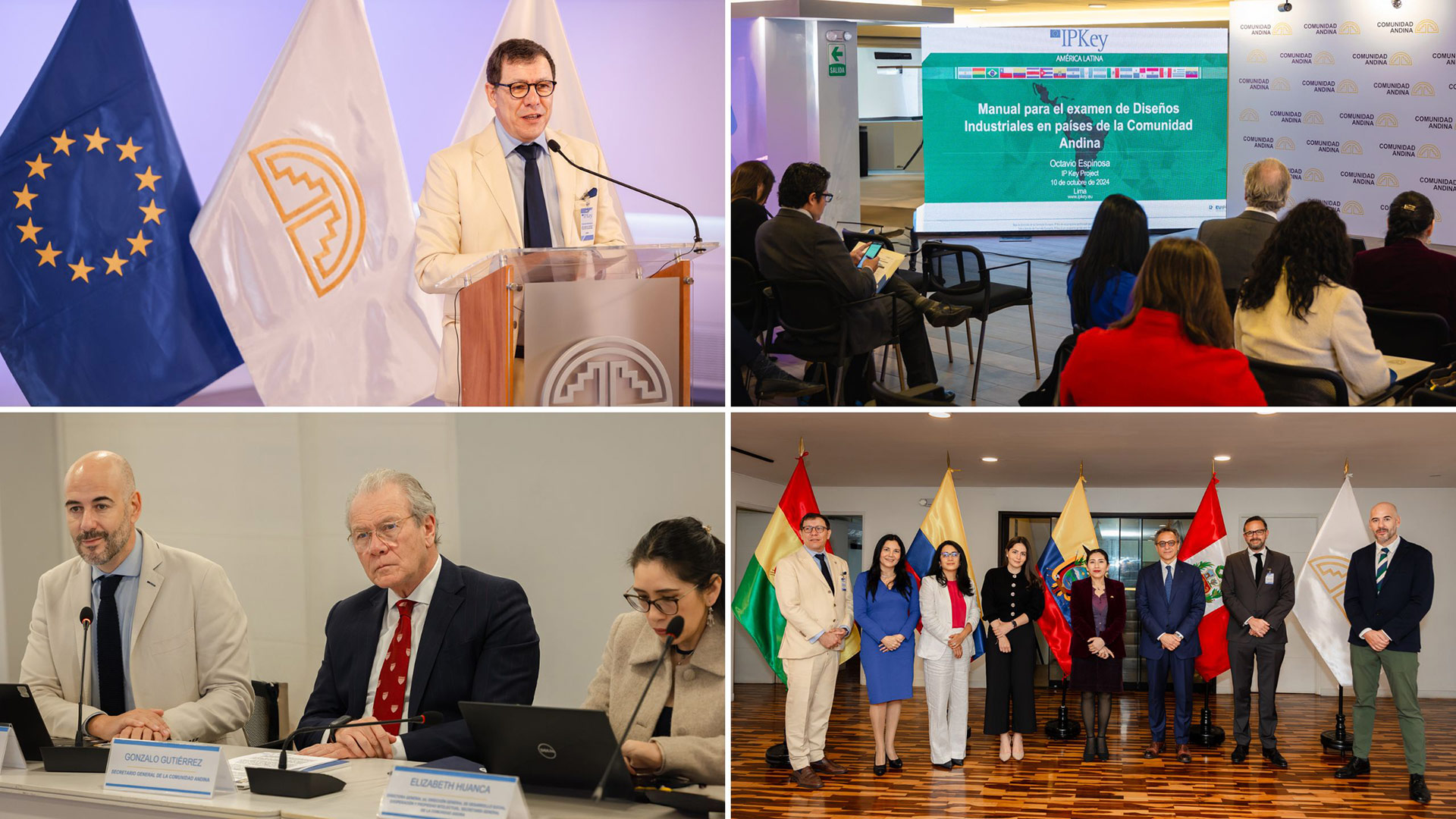Lima was the venue for the presentation of studies carried out by the EUIPO on intellectual property in the Andean Community
The European Union Intellectual Property Office (EUIPO), building on its strategic partnership with the Andean Community (CAN) countries and in collaboration with the General Secretariat of the Andean Community (SGCAN) in Lima, Peru, and the IP offices of the CAN countries (SENAPI-Bolivia, SIC-Colombia, SENADI-Ecuador and INDECOPI-Peru), presents two significant studies to advance the harmonisation and enhancement of the design and trade mark registration systems on 10 and 11 October.
The first study focuses on the feasibility of implementing an Andean Community trade mark system modelled after the successful European Union trademark system, which has a solid 30-year track record. This system would allow applicants to register a trade mark that is valid in all CAN countries, simplifying processes and reducing costs.
The creation of an Andean Community trademark would not only facilitate the protection of trade marks at the regional level but could also strengthen the CAN’s global position by providing a registration system aligned with global standards.
The EUIPO has evolved into a true regional hub by fostering collaborative growth with national offices, and the partnership with the Andean Community (CAN) exemplifies how this evolution can be synergised beyond the EU border. More importantly, EUIPO´s experience is that the creation of a regional IP right can be mutually supportive to the development of national IP offices, as the EU example clearly shows, by means of the development of common tools and IP practices. Through its engagement with CAN, the EUIPO has demonstrated how regional cooperation can enhance intellectual property systems, supporting the alignment of practices and the creation of a unified trade mark system. This partnership is emblematic of the EUIPO's core mission—harmonising and improving IP frameworks to boost regional and global competitiveness. Highlighting the potential of the Andean Community Trade Mark system underscores the importance of replicating the EUIPO's successful model in fostering trust, efficiency, and transparency across borders. This initiative is central to the EUIPO's role as a leader in intellectual property innovation and cooperation.
The second study, titled ‘Common Guide on the Examination and Registration of Industrial Designs in the Andean Community’, addresses the issue of varying practices among IP offices in Bolivia, Colombia, Ecuador and Peru, despite a common regulatory framework. This variation has created legal uncertainty and discouraged applicants. The guide aims to standardise the criteria for industrial design evaluation and registration throughout the community. This will ensure greater consistency and predictability in decisions, facilitating effective and efficient access to the protection provided by the registration systems.
These initiatives are aligned with the strategic objectives of the EUIPO. In particular building trust and respect through the harmonisation of practices and the promotion of the Andean Community trade mark which will improve access to the IP system. The event also optimised operational efficiency by improving predictability and transparency in the administration of IP rights in the region.
The EUIPO has established itself as a key partner and role model in the creation of examination guidelines, setting clear and effective standards that inspire other organisations to follow its lead. Its rigorous and collaborative approach not only ensures quality in the examination process, but also provides an invaluable benchmark for improving practices globally.
